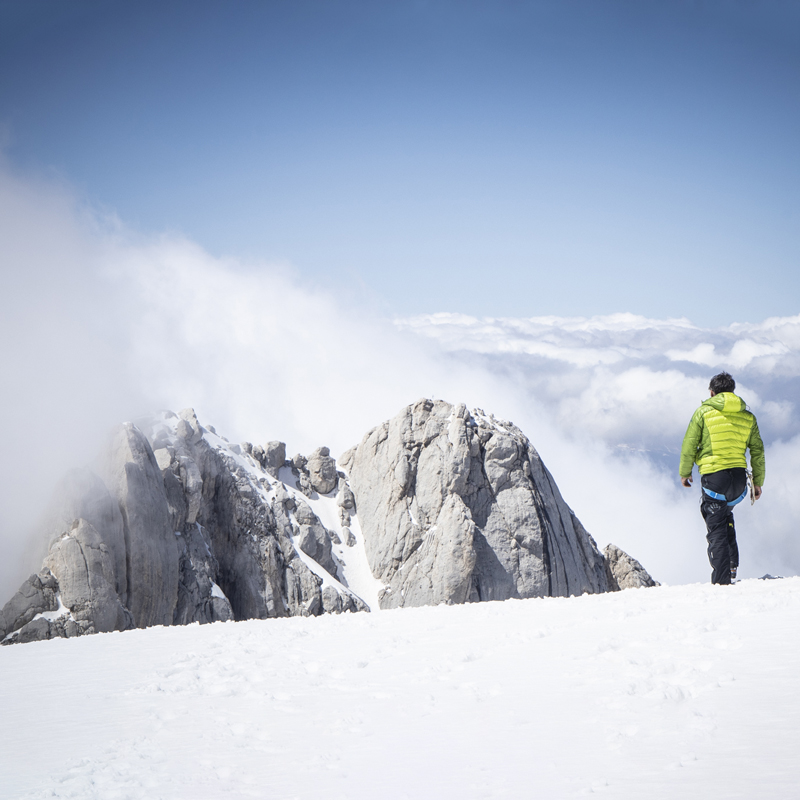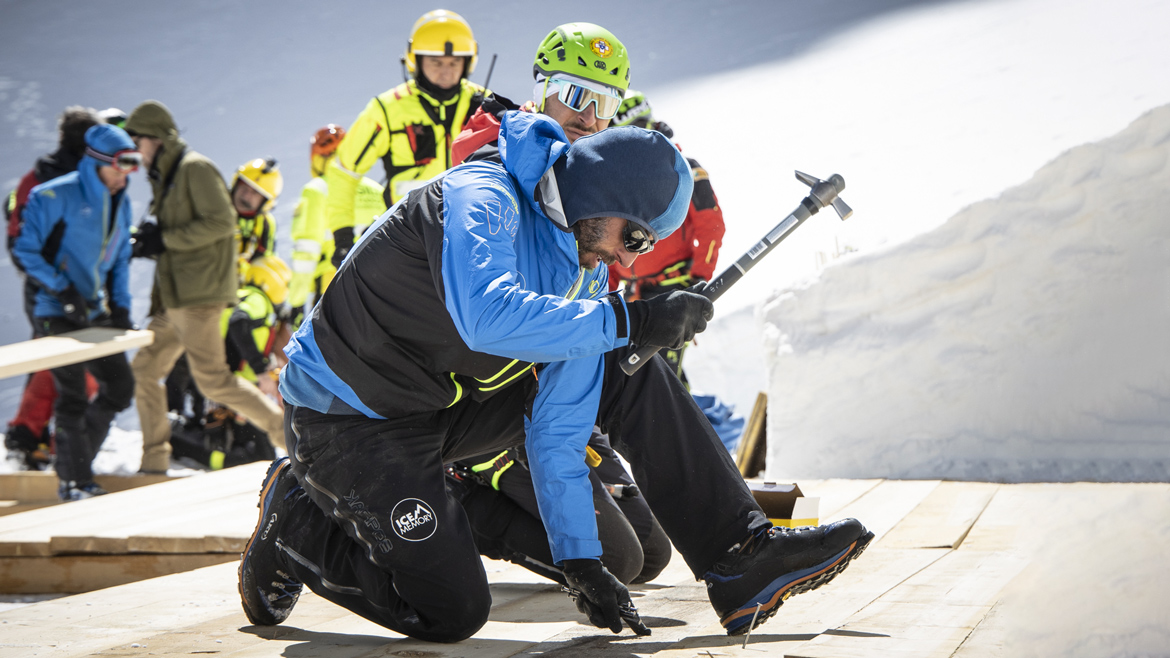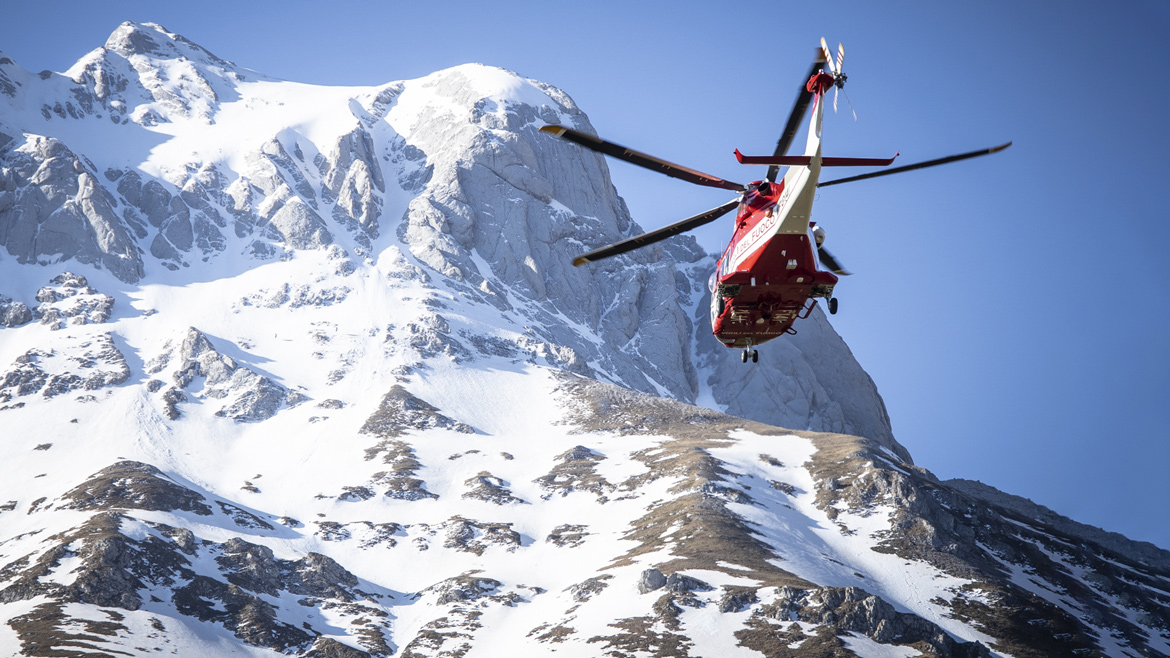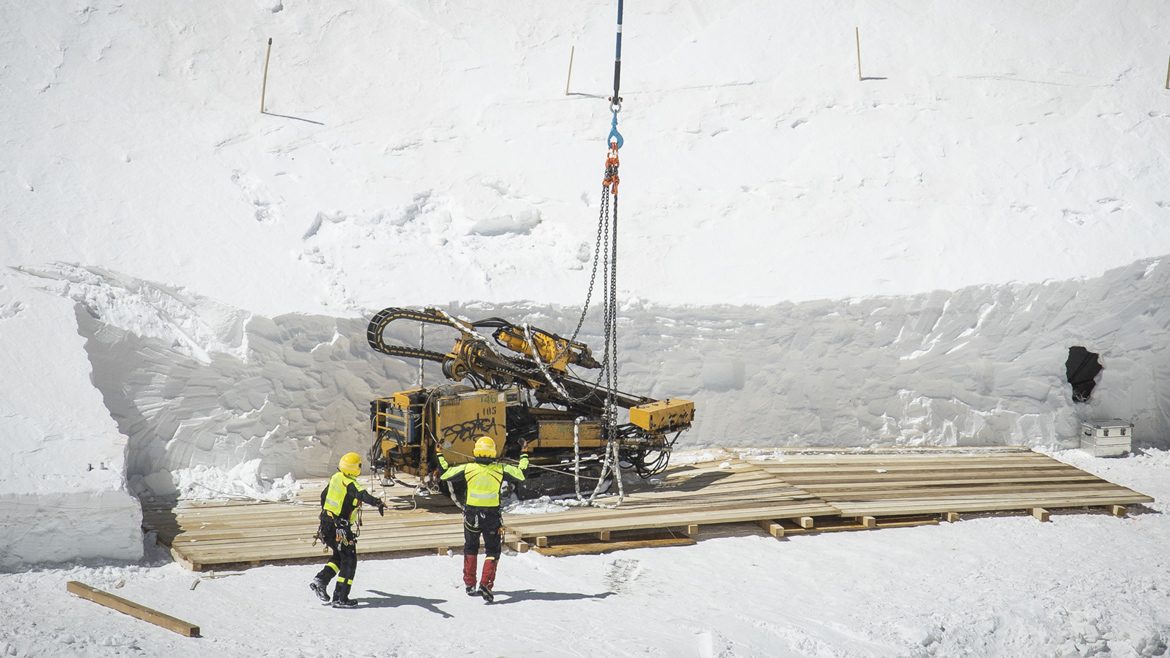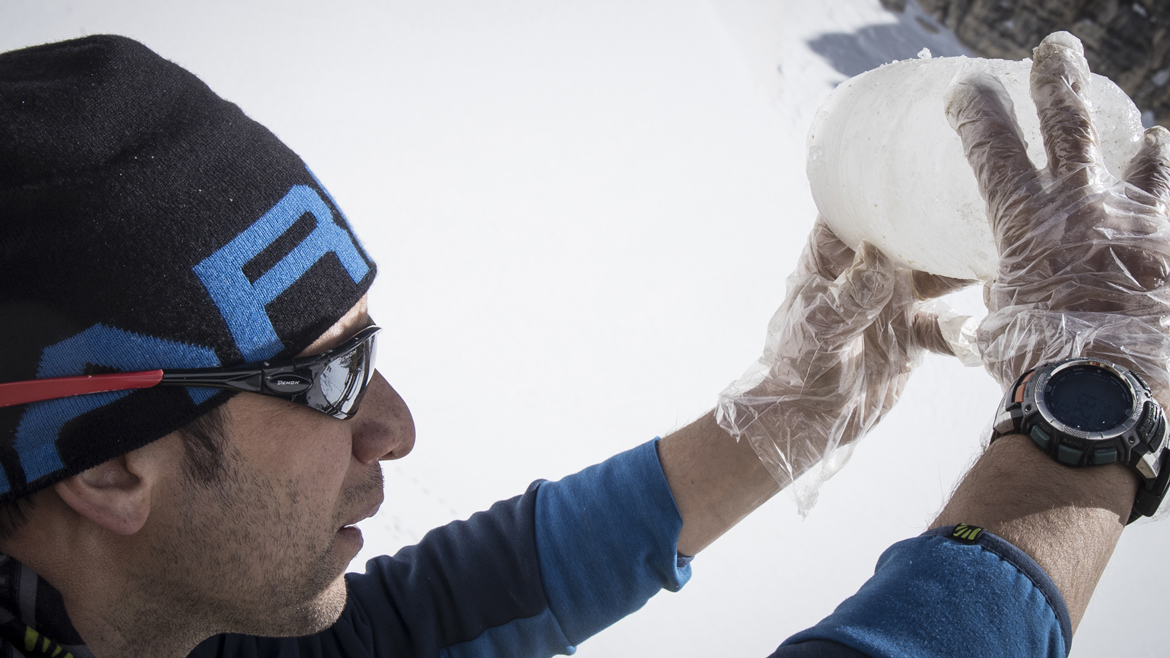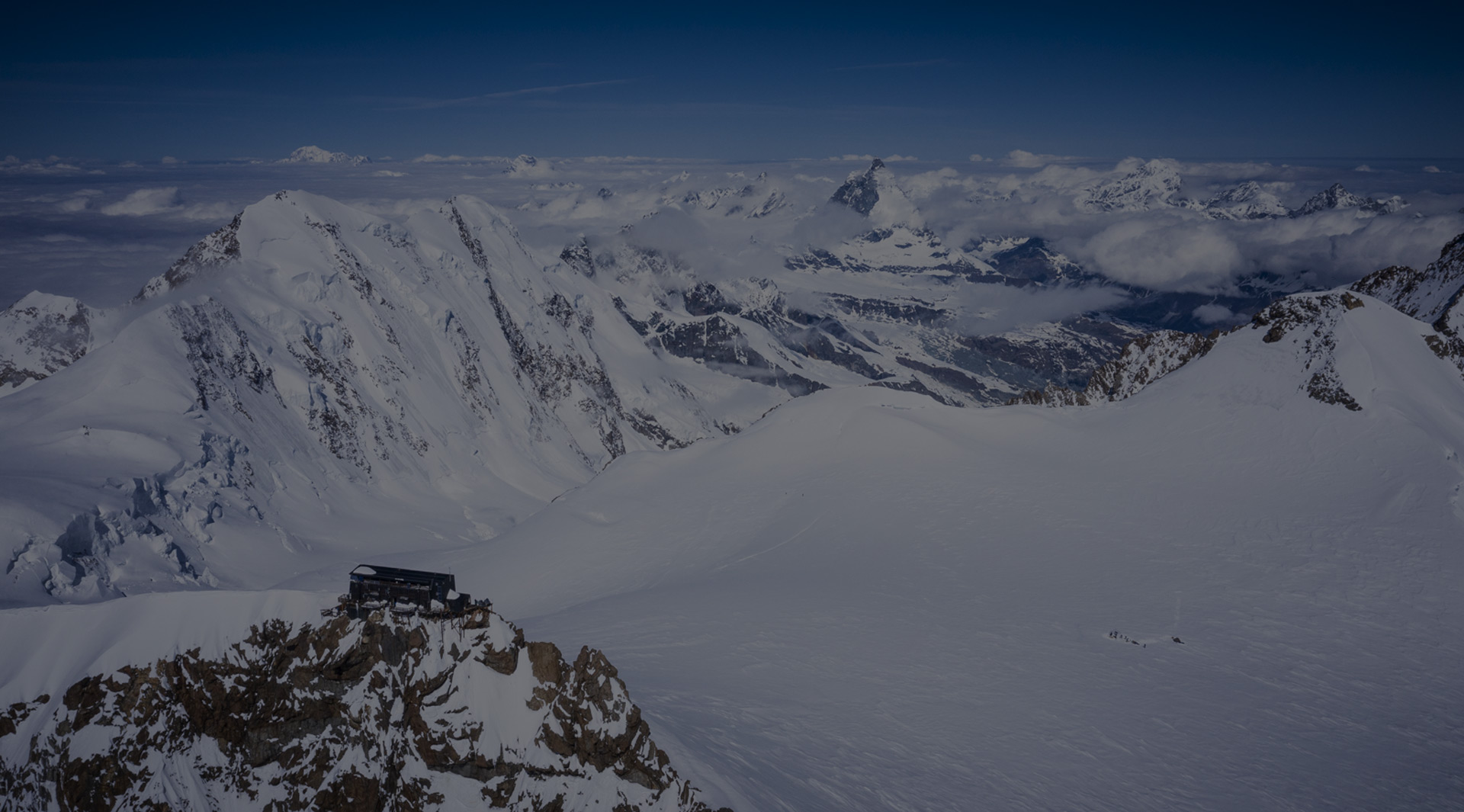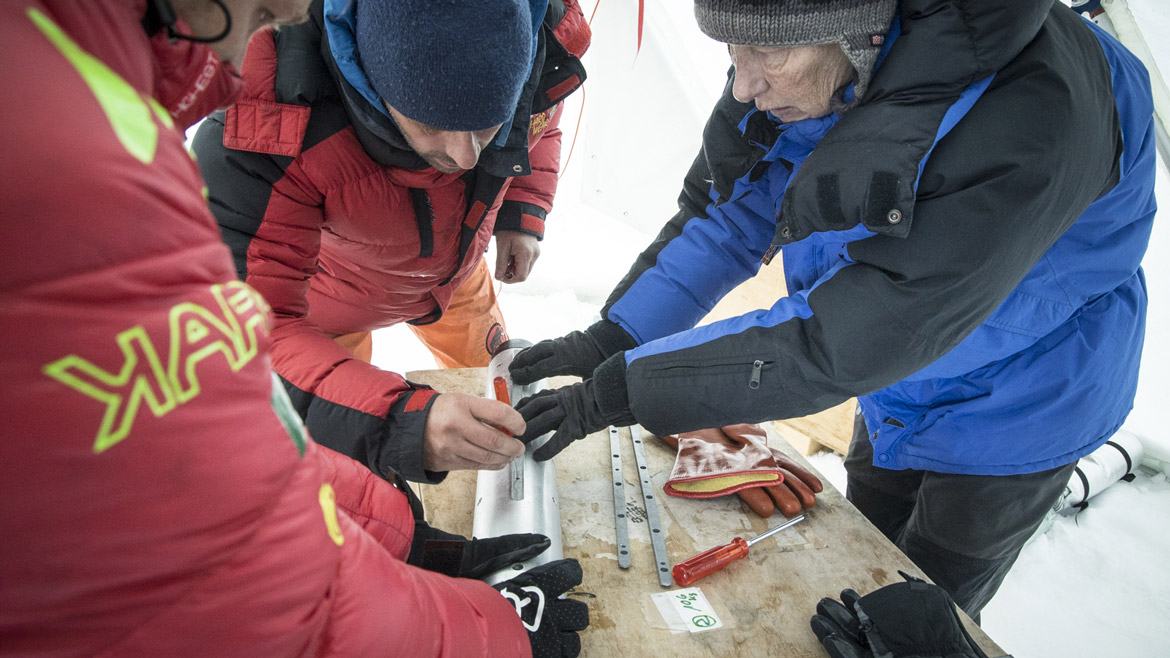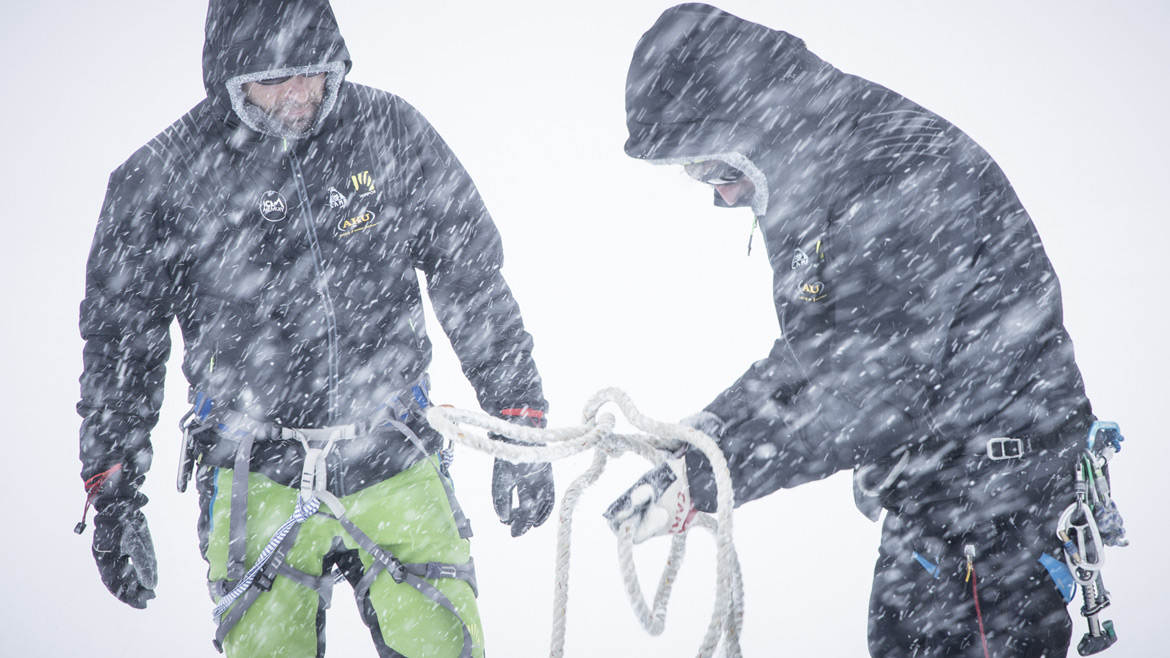HELP THE MOUNTAINS
HELP THE MOUNTAINS
ICE MEMORY – THE GRAN SASSO’S MEMORY OF ICE
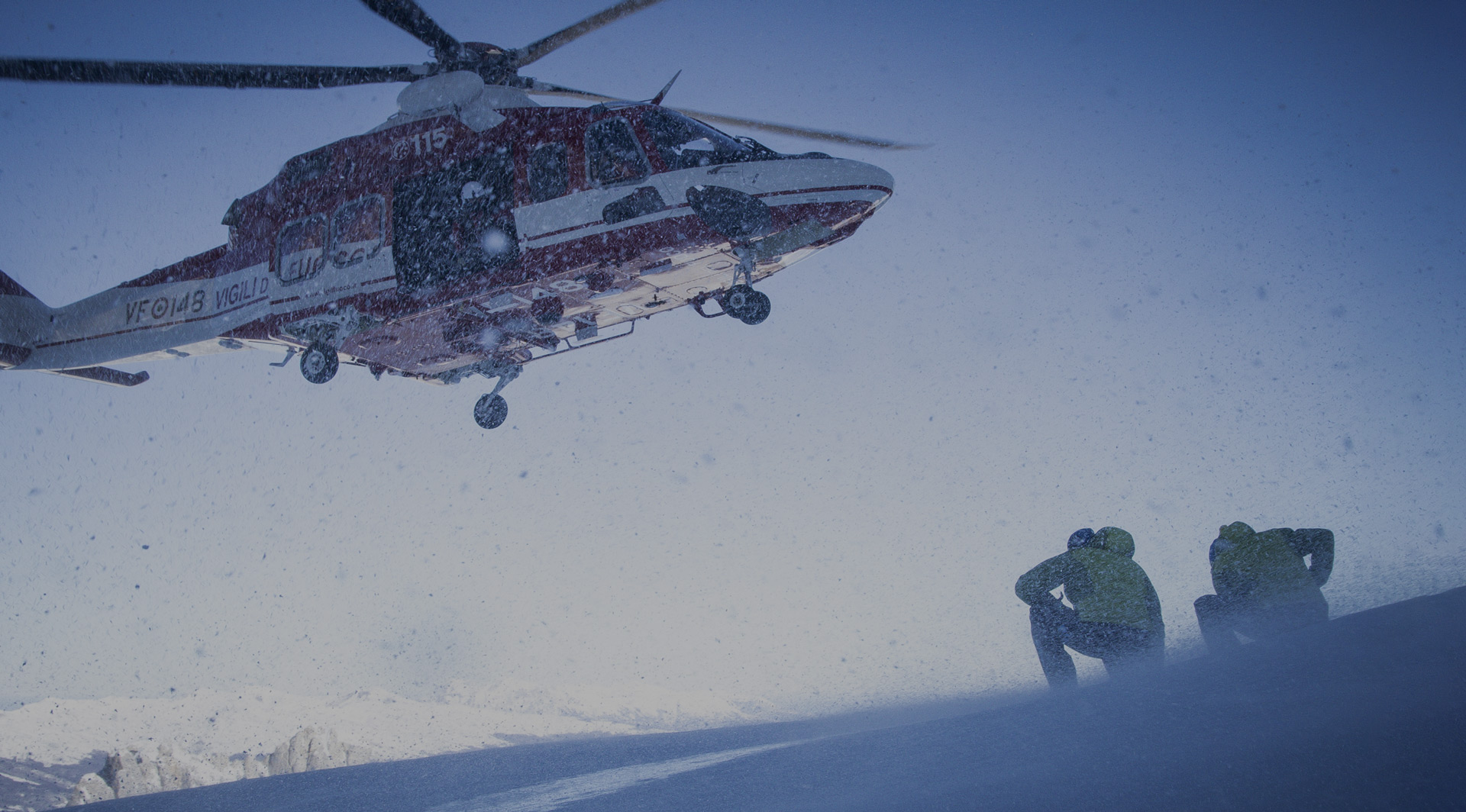
Traces of plants and insects that lived thousands of years ago. This is what has emerged from the depths of the Calderone glacier in the analyses carried out by Italy’s National Research Council (CNR) in collaboration with Ca’ Foscari University of Venice.
This is the second phase of the Ice Memory project, which began last year with ice core drilling on the Gorner glacier on Monte Rosa.
The project aims to study and understand the evolution that the climate has undergone in recent millennia. This effort is critical in the fight against the climate crisis — a real race against time that is gradually bringing us closer to understanding what is happening. At Karpos, we see research as an essential resource for creating innovative solutions. This is why we continue to support the Ice Memory project, with the belief that every expedition can provide another piece of the puzzle to help counter the melting of the glaciers.
Coring the glaciers and storing the samples at the DomeC site, in Antarctica, is the only way to ensure conservation of the information contained in the deepest layers of ice.
An invaluable gift to the next generations of scientists, who, with the benefit of future technologies, will be able to act more effectively to counter and prevent the effects of climate change.
From the Gorner glacier on Monte Rosa, where two cores more than 82 meters long were extracted in 2021, the Ice Memory staff moved to the Gran Sasso, where they carried out core drilling on the Calderone glacier, the only one in the Apennines and the southernmost in Europe.
This is a glacial mass that began to retreat in 1850 and that in the last 10 years has experienced an aggravation of the phenomenon, due both to increasingly infrequent snowfalls and to the consistent presence of the African anticyclone during the summer.
Chemical analyses performed by the CNR, in collaboration with Ca’ Foscari University of Venice, have shown that the Calderone is receding by about 1 meter every year and overall does not exceed 25–30 meters in depth, to the point that it has been downgraded to a glacieret, a perennial accumulation of ice and snow that is differentiated from a glacier by its smaller volume and reduced movement.
In short, the conditions of the Calderon are critical, and if no action is taken soon, it will vanish forever.

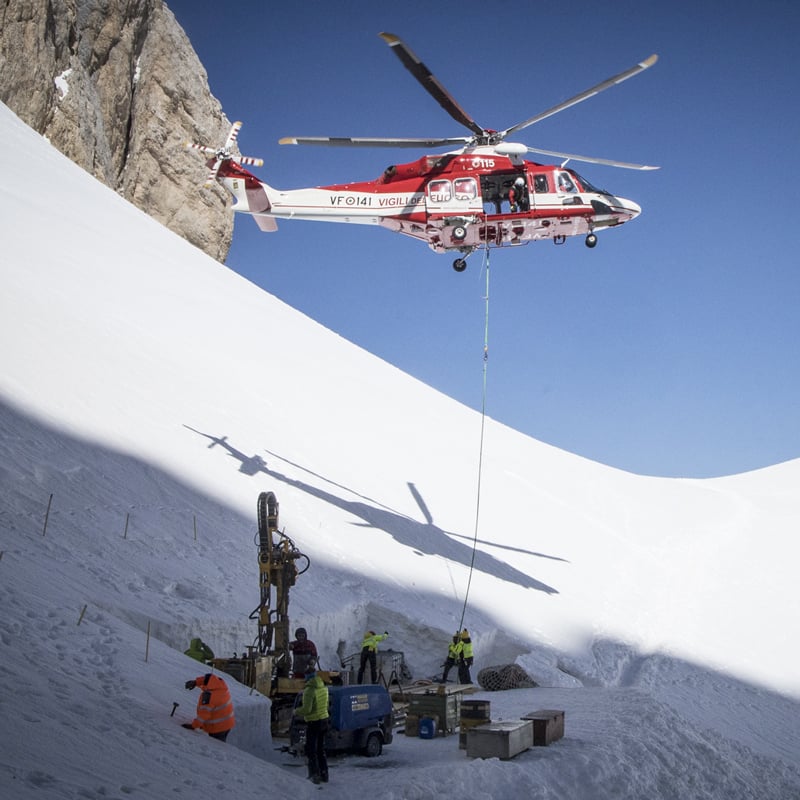
The difficult conditions of the glacier called for a preliminary phase with geophysical and topographic investigations, carried out using ground-penetrating radar and electromagnetic ground conductivity meters. The result of these analyses revealed, under a thin debris cover, the presence of an ice thickness equal to 26 meters, sufficient for carrying out the core drilling. A particularly complex operation made possible by the use of state-of-the-art helicopters that allowed the transport of supplies, personnel, and above all the core-drilling machine to the foot of Corno Grande, at 2,673 meters of elevation.
“The drilling was quite difficult, both because of the weather conditions, which were often very harsh, and because the ice was extremely warm and impregnated with water. The tip of the core barrel tended to get blocked and be unable to cut through the surface.”
JACOPO GABRIELI – CNR-ISP RESEARCHER AND MISSION COORDINATOR
The operations led to the extraction of a sample from a depth of 27.2 meters, which, at the moment, seems to contain all the essential information on the climatic and environmental history of central Italy. After its transfer to Antarctica, the core sample will help researchers to describe in detail Mediterranean glaciation and understand its climatic evolution.
PRODUCTS USED
In parallel to the activity in the field, Ice Memory is conducting an awareness-raising campaign to educate people on the need to adopt policies that will support environmental sustainability and the conservation of glaciers, the true cornerstone of the life of mountain communities.
Ice Memory is part of the Help the Mountains program, through which we donate 1% of our turnover to initiatives that promote the maintenance and development of mountain areas.
All this is possible also thanks to your support!
